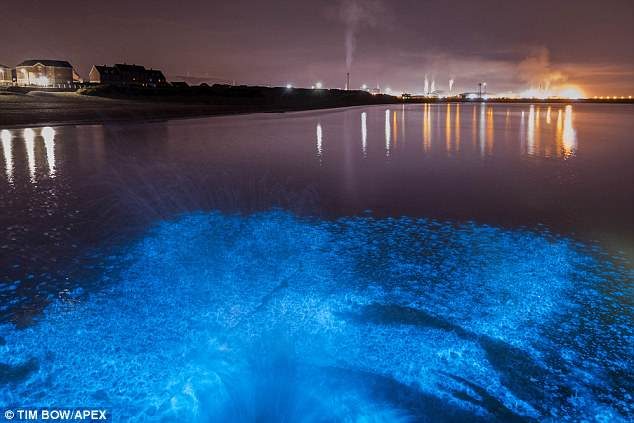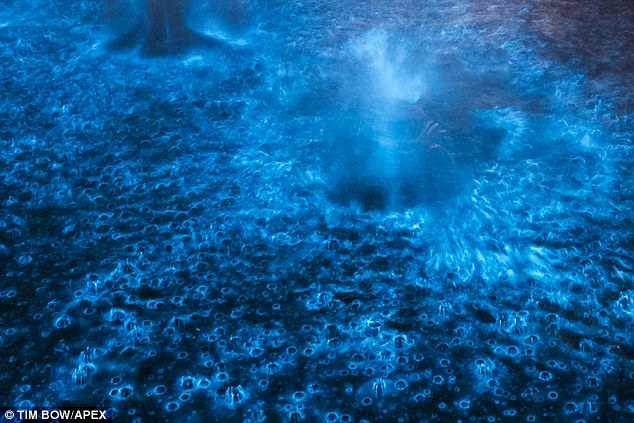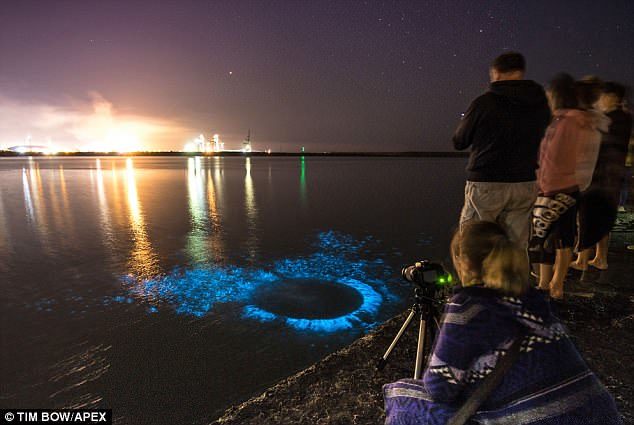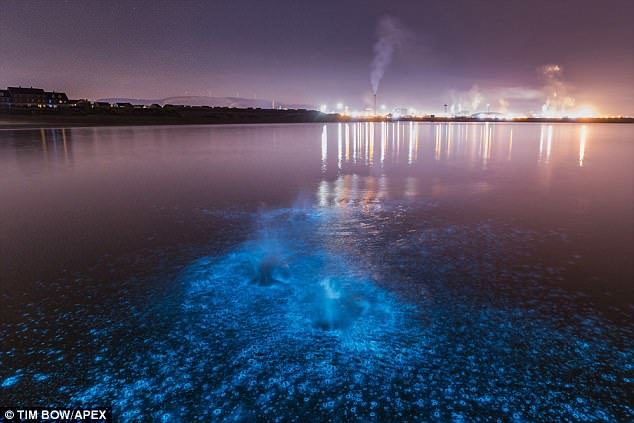Photographer Tim Bow captured the rare natural phenomenon off the coast of Port Talbot, Wales, last week, amidst a spike in the sightings of bioluminescent plankton.
Scientists believe the phenomenon is the result of plankton being disturbed, causing them to emit light though a complex chemical reaction.
It is thought the recent surge in sightings of bioluminescent plankton has been caused by the heatwave.
Mr Bow snapped these breathtaking images on Friday night.
He said: 'Bioluminescent plankton is randomly popping up at different locations around Wales.
'It's been spotted at different locations along the South Wales coast in the past week although it's slightly unpredictable.
'It's believed that the increased sightings are from the high temperatures we have had over the past few weeks warming the waters around the UK.'
Bioluminescence is the production and emission of light by a living organism.
It occurs widely in marine vertebrates and invertebrates, as well as in some fungi and microorganisms such as phytoplankton.
What is bioluminescence?
Bioluminescence is the production and emission of light by a living organism.
It occurs widely in marine vertebrates and invertebrates, as well as in some fungi and microorganisms such as phytoplankton.
The word comes from the Greek 'bios' for living and the Latin 'lumen' for light.
Bioluminescence is a type of light energy produced by a chemical reaction.
Different types of animals use bioluminescence in different ways.
Deep sea squid use it for counter illumination camouflage so they match their environmental light, but Anglefish use it to lure prey with a light-up dangling appendage from their head that draws in smaller fish, which they can eat.
Fireflies use bioluminescence to attract mates by flashing their abdomens, while their larvae use it to repel predators.
Millipedes also glow to put predators off of eating them.







Comment: As noted in the article this phenomenon occurred recently elsewhere in Wales, the following footage was taken off the coast of Anglesey Island in early July: